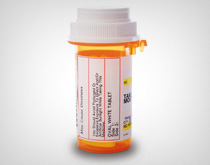
When the reporter called in late 2004, the issue of suicide among teenagers wasn't among Joel Greenhouse's research priorities. The FDA had just released an analysis that seemed to indicate antidepressant drugs might cause children to take their own lives. The reporter asked Greenhouse, a Carnegie Mellon statistician who specializes in mental health research, to review the FDA's analysis.
He found that it wasn't based on studies that directly examined whether antidepressants caused pediatric suicide, but on a pooling of data from trials gauging whether the drugs helped depressed and anxious children. Although the FDA analysis found no suicides among the study participants, the agency required that antidepressants be labeled with a warning stating, in part: Antidepressants increase the risk of suicidal thinking and behavior.
Greenhouse was an ideal source for the reporter. One of his statistical specialties is evaluating data that researchers use to test their hypotheses in the absence of specific clinical trials.
The FDA's 2004 warning label came after a year of media reports about the issue, a year, perhaps not coincidentally, in which antidepressant prescriptions among children decreased. Statistics for that year showed pediatric suicide rates increased by 18 percent, despite a steady decline in the previous 15 years. The FDA considered the rise an anomaly, but Greenhouse reviewed the 2005 numbers. He and his collaborators recently reported in JAMA that, though suicides did decline slightly from 2004 to 2005, there were still more pediatric suicides in 2005 than if the 15-year downward trend had continued.
Greenhouse says his ongoing research asks, "What sort of evidence would be needed to convince the FDA to rescind the blackbox warning? And where would that evidence come from?"
—Leah Kauffman (HS'02)



